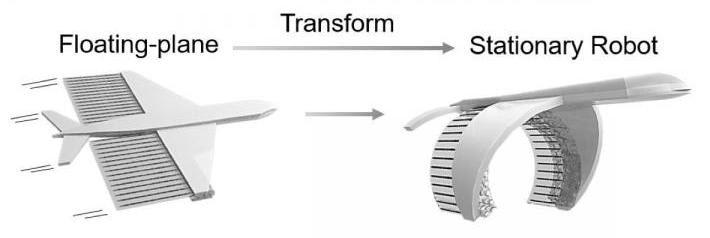May 16 2019
Taking inspiration from the toy shelf and biology, scientists at Thayer School of Engineering at Dartmouth College and City University of Hong Kong have built a swimming robot having a light-controlled cellular engine that can carry out highly-targeted drug delivery.
 Researchers created a remote-controlled soft robot that can transform itself to conduct targeted drug delivery against cancer cells. (Image credit: City University of Hong Kong)
Researchers created a remote-controlled soft robot that can transform itself to conduct targeted drug delivery against cancer cells. (Image credit: City University of Hong Kong)
Scientists integrated cardiac tissue engineering, a 3D-printed wing structure and a light-sensitive gel to create the soft robot with start-stop feature. The switchable device changes its shape when exposed to skin-penetrating near-infrared light, causing it to drive and brake through fluid environments similar to the human bloodstream.
The transformable device greatly enhances the practicality of robots engineered to work inside the human body and other unconventional work settings.
The study team at City University of Hong Kong created the original robot design and carried out the experimental tests. The Dartmouth team carried out mechanical and numerical analysis on the device and suggested modifications to design elements like shape and size.
With this technology, we can create soft transformable robots with unprecedented maneuverability. Our inspiration came from transformable toys that have different configurations and functionality. The result is no toy, it may literally change people's lives.
Zi Chen, Assistant Professor of Engineering, Thayer School of Engineering, Dartmouth College
Living organisms can change shapes to perform particular actions. A hedgehog curls into a ball when faced with a threat. Birds stretch their wings to fly. Carnivorous plants like the Venus flytrap open and close. The new research is part of a long-term effort to build robots that imitate this shape-altering behavior seen in nature.
To be operational, the new generation of robots has to be energy efficient and they must be able to react to various types of stimulus, like heat or light.
Although examples of these types of robots are present, scientists have found it hard to build a device that effortlessly changes its shape to permit it to start and stop moving on demand. The majority of present-day systems also rely on temperature differences that are tough to stimulate in the human body due to its almost-constant temperature.
"The ability to control the robot's motion using light creates a much more functional device that can be operated with high precision," said Xiaomin Han, a recent PhD graduate from the Chen Research Lab at Thayer.
The remote-controlled robot is driven by a tail fin that imitates the swimming movement of whales. The structure was 3D printed in the shape of an airplane wing and then coated with heart muscle cells. In the same manner that cardiomyocytes cause the heart to beat nonstop, they also push this biohybrid device through a continuous undulating action.
To regulate the movement of the robot, scientists coated photosensitive hydrogels to the wings. When there is no light, the wings deploy, allowing the heart cells to push it forward. When exposed to light, the floating plane withdraws its wings, making it stop.
"The heart muscles keep churning, but they are unable to overcome the stopping power of the wings," said Chen. "It's like pushing the accelerator pedal with the emergency brake on."
The high sensitivity of the robot to near-infrared light forms a response rate that allows a virtually instant transformation of wing shape, enabling it to be very maneuverable. In the research, the team used the "unprecedented controllability and responsiveness" of the floating-plane robot as a cargo carrier to perform targeted drug delivery against cancer cells.
We literally dropped drug bombs on cancer cells. The realization of the transformable concept paves a pathway for potential development of next-generation intelligent biohybrid robotic systems.
Zi Chen, Assistant Professor of Engineering, Thayer School of Engineering, Dartmouth College
The biohybrid robot can be built in a range of sizes spanning from several millimeters to dozens of centimeters. Such scalability offers it good versatility to handle tasks connected to navigation and surveillance in tough settings.
A study detailing the research was first published in the academic journal Small in late March.
In the present study, scientists regulate start-stop motion of the whole robot using light. Future research will utilize light to target individual wings on the robot so that it can be navigated with even more precision.
This study was carried out with Peng Shi and Bingzhe Xu from City University of Hong Kong. Yuwei Hu and Chia-Hung Chen from National University of Singapore and Yiming Luo from Hubei University of Technology also contributed to the research.